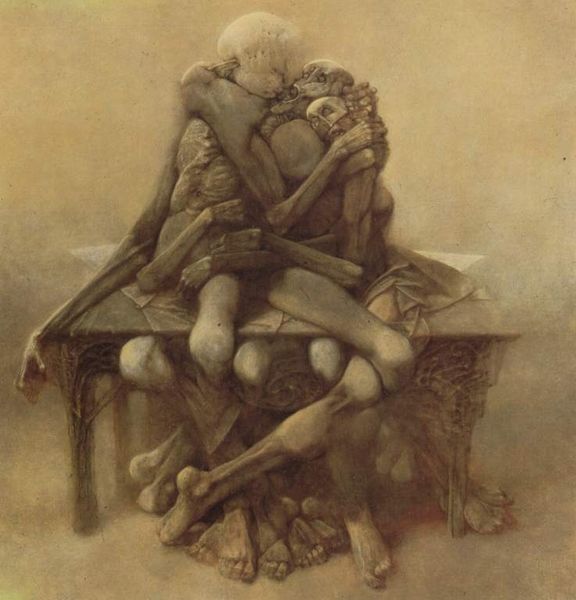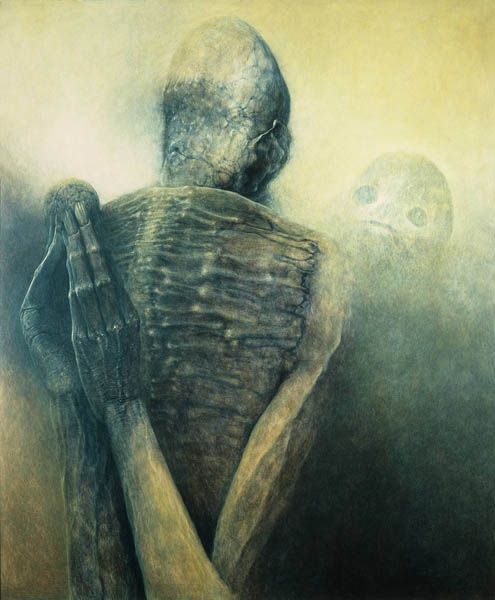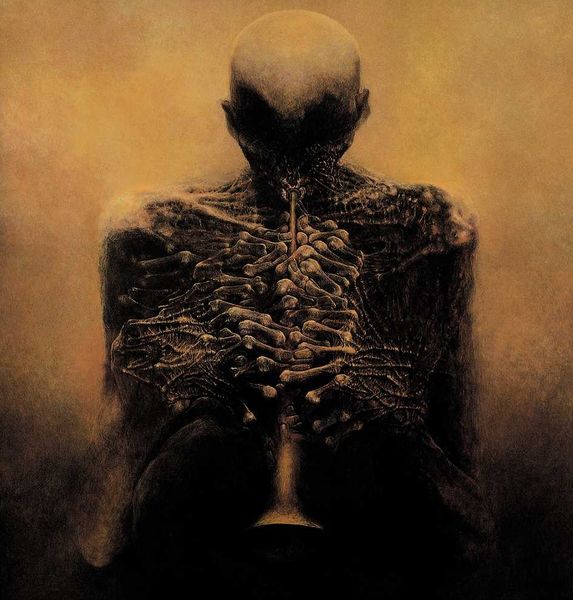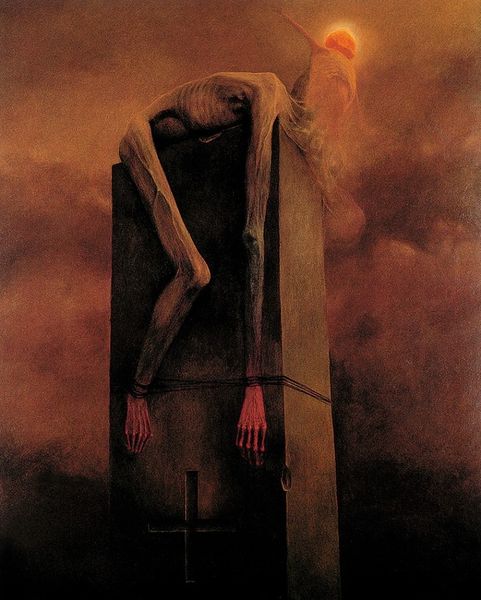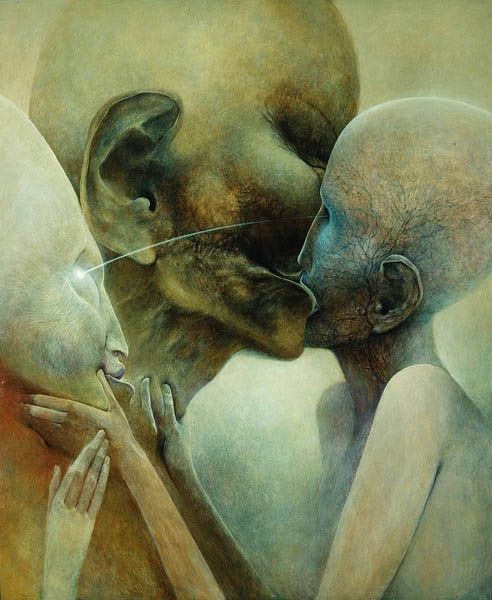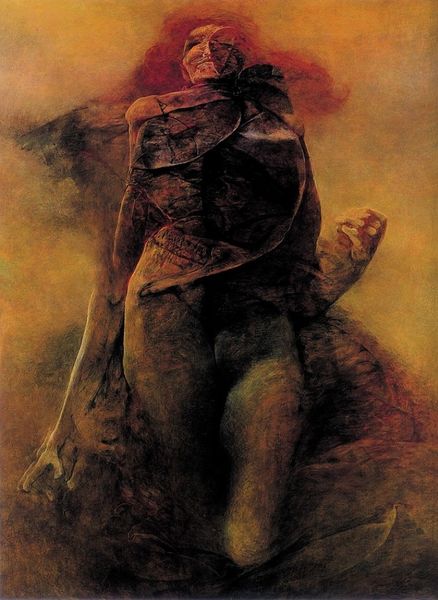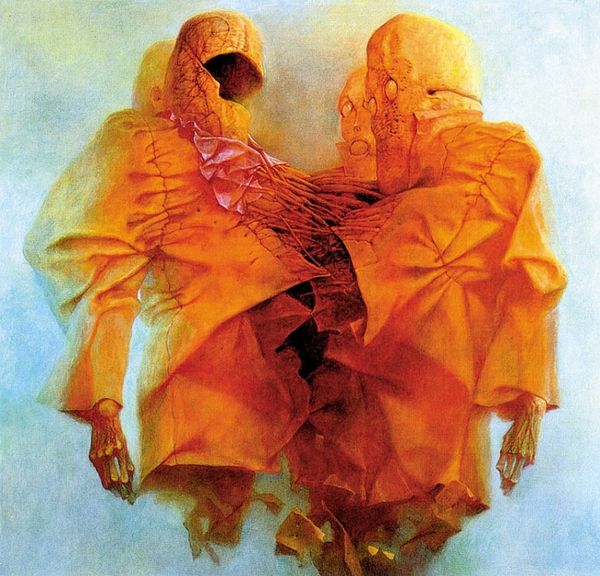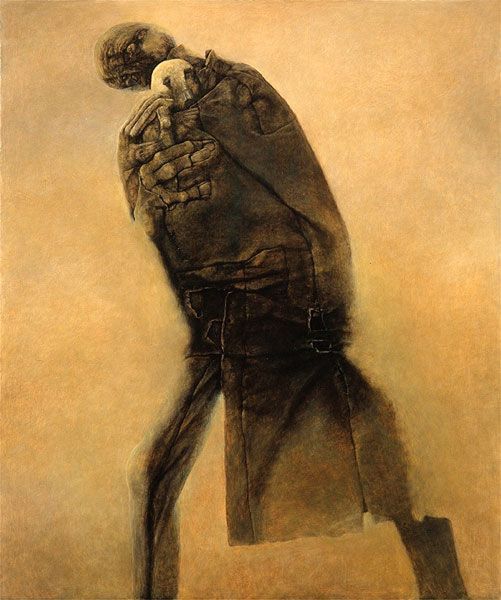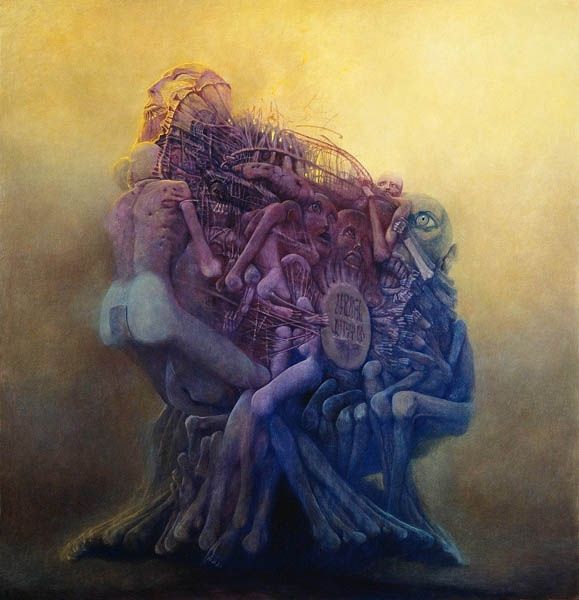
acrylic-paint, impasto
#
allegories
#
acrylic-paint
#
figuration
#
impasto
#
neo-expressionism
#
abstraction
#
modernism
Copyright: © The Historical Museum in Sanok (Poland) is the exclusive owner of copyrights of Zdzisław Beksiński's works.
Curator: Standing before us is an "Untitled" work by Zdzislaw Beksinski, crafted in 1984 with acrylic paint, showcasing impasto techniques. What are your initial impressions? Editor: There's a profound sense of unease, a visceral reaction to the figures depicted. The monochromatic palette and skeletal forms evoke feelings of mortality and decay. How do these visual elements play into a larger cultural dialogue? Curator: Beksinski's embrace of Neo-Expressionism merges figuration and abstraction, inviting an analysis of its formal composition. Note the tightly interwoven figures, their embrace a central axis around which the painting’s meaning coalesces. The lack of clear delineation blurs boundaries. What semiotic functions do such artistic choices fulfill? Editor: One cannot ignore the socio-political context from which Beksinski emerged; Poland under communism. These images speak volumes about repressed emotions and a society grappling with trauma. The universality of suffering transcends immediate historical readings, too. How did this period shape his unique artistic style and what public response did this work incite? Curator: The thick application of acrylic contributes textural complexity. Impasto amplifies light and shadow interplay, creating a visual field pregnant with tension. Considering this, where does one locate 'beauty' in Beksinski's work if not in the macabre? Editor: The reception of Beksinski's work was decidedly mixed. He offers a dark vision, not readily consumed in a cultural landscape molded by optimism, however false, through mass media. This painting pushes the viewer to confront their own mortality; its place in the history of art and collective memory remains significant. How do the structures inherent within Modernist artistic philosophy support Beksinski's project? Curator: Such a dialogue enables further exploration into Beksinski's manipulation of form. It reframes assumptions about aesthetics within modern art. Editor: And contextualizing Beksinski reminds us that art can serve as a mirror reflecting society’s deepest anxieties and hidden realities.
Comments
No comments
Be the first to comment and join the conversation on the ultimate creative platform.
